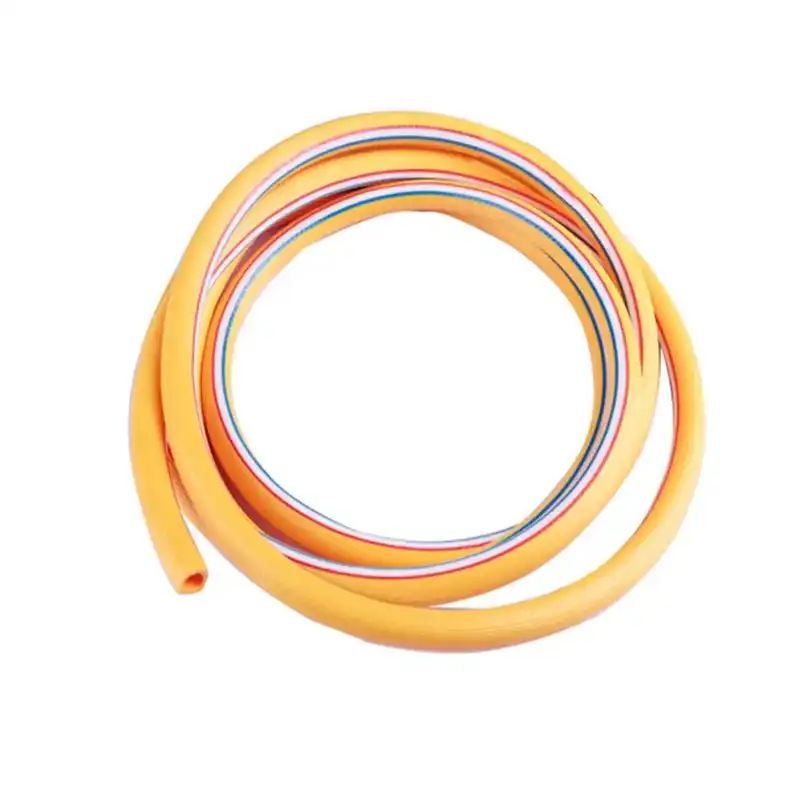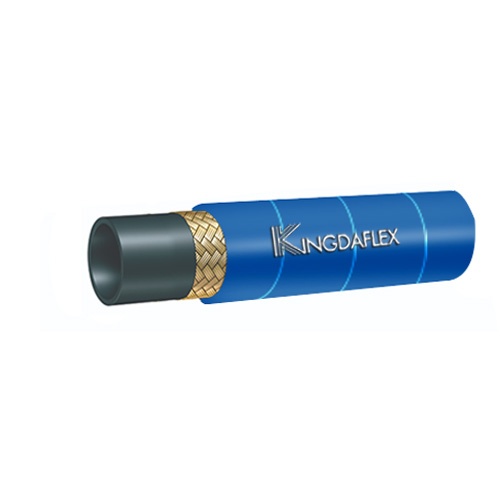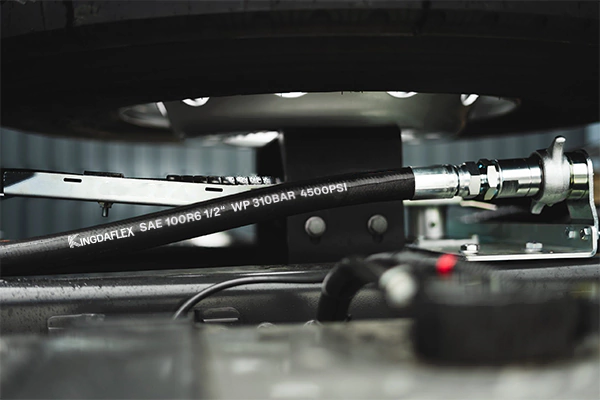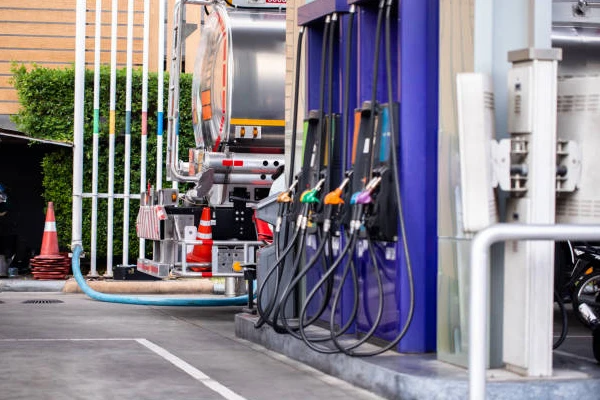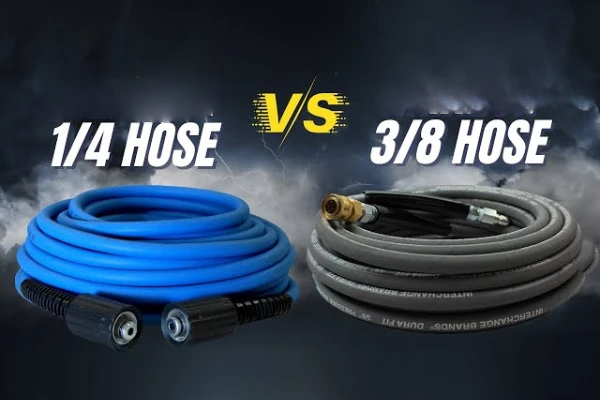Understanding the distinctions between hydraulic hoses and pressure washer hoses is crucial for safety and efficiency. While both transport pressurized fluids, their designs, materials, and capabilities are fundamentally different, tailored to their specific applications. Misusing either can lead to serious equipment damage or personal injury.
This blog will delve into the core characteristics of each hose type, highlighting their unique construction, pressure ratings, and intended uses. By clarifying these differences, we aim to equip you with the knowledge to select the correct hose for your needs, ensuring optimal performance and preventing costly mistakes.
What are Hydraulic Hoses
-
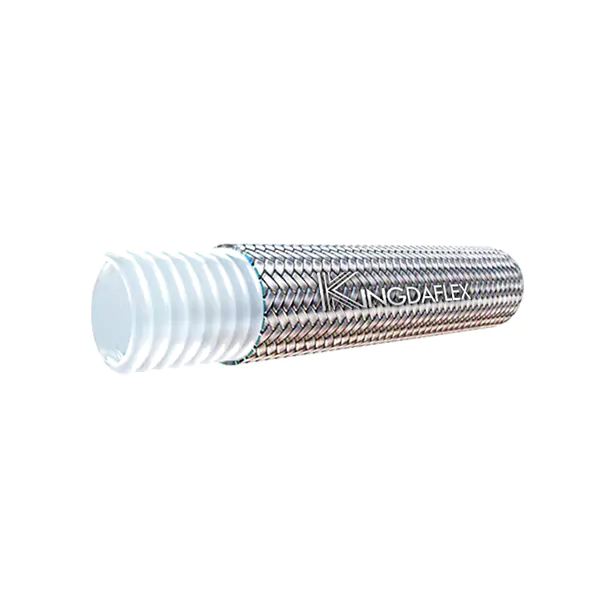 SAE 100R14 / Teflon Hose(Inner Corrugated Tube)
SAE 100R14 / Teflon Hose(Inner Corrugated Tube) -
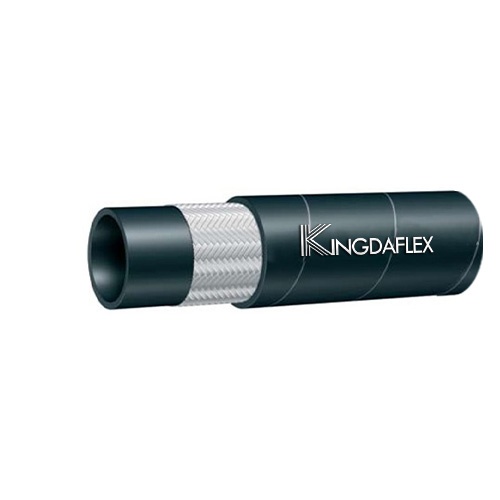 SAE 100R6 | Hydraulic Hose
SAE 100R6 | Hydraulic Hose -
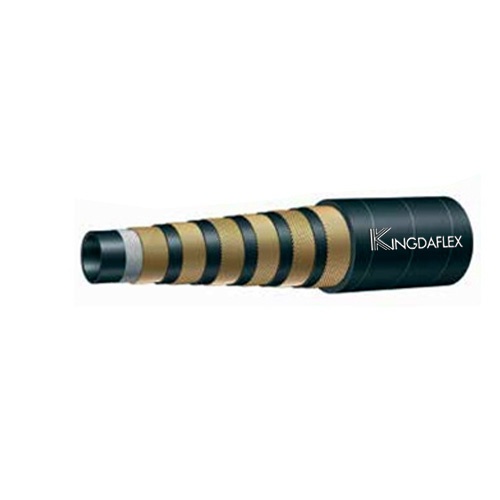 SAE 100R15 | Hydraulic Hose
SAE 100R15 | Hydraulic Hose -
 SAE 100R13 | Hydraulic Hose
SAE 100R13 | Hydraulic Hose -
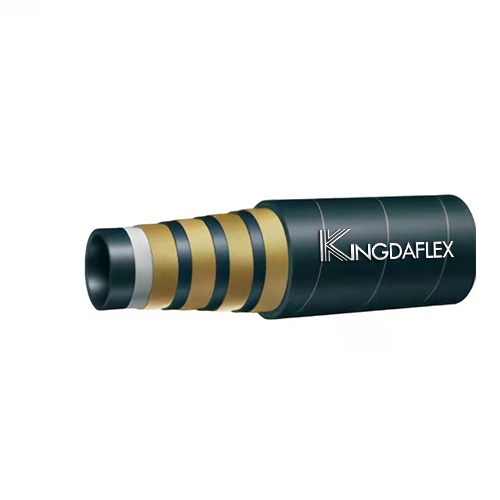 SAE 100R12 | 4 Wire Spiral Hydraulic Hose
SAE 100R12 | 4 Wire Spiral Hydraulic Hose -
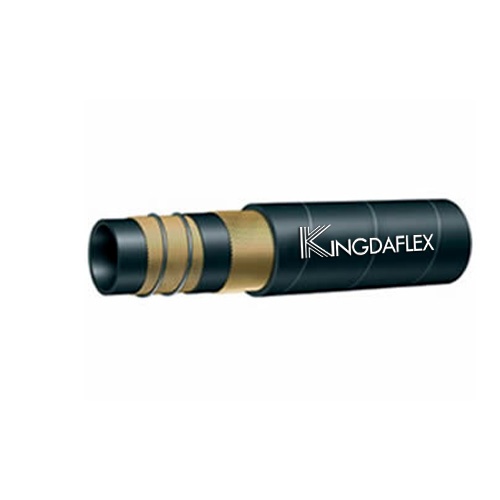 SAE 100R4 | Hydraulic Suction Hose
SAE 100R4 | Hydraulic Suction Hose -
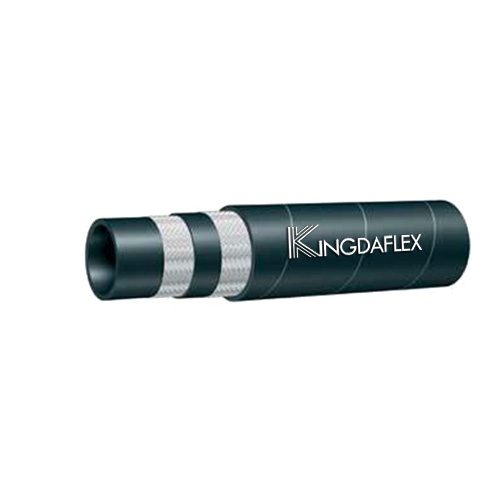 SAE 100R3 Textile Fiber Reinforced Hydraulic Hose
SAE 100R3 Textile Fiber Reinforced Hydraulic Hose -
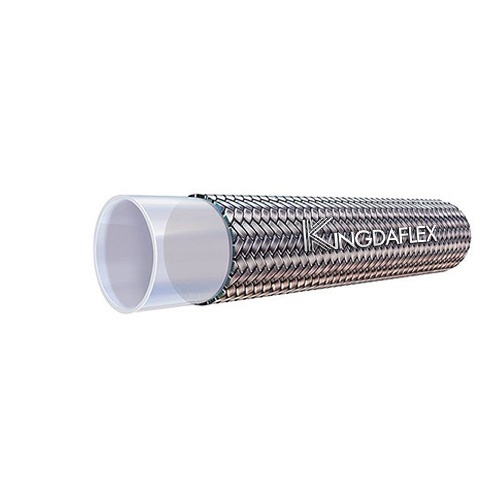 SAE 100 R14 / Teflon Hose (Inner Smooth Tube)
SAE 100 R14 / Teflon Hose (Inner Smooth Tube) -
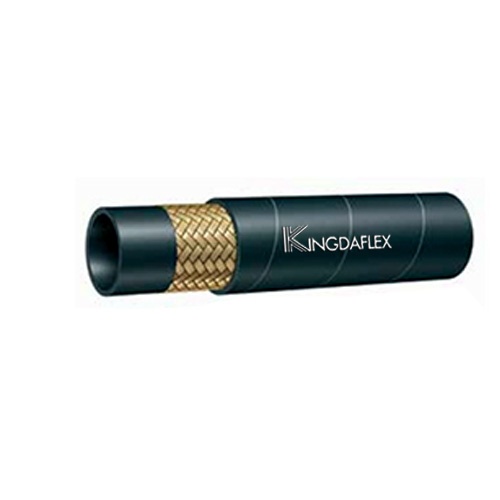 SAE 100R17 | Hydraulic Hose
SAE 100R17 | Hydraulic Hose -
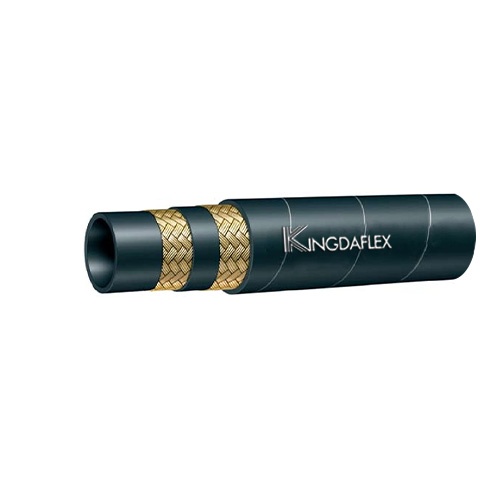 SAE 100R16 | Hydraulic Hose
SAE 100R16 | Hydraulic Hose -
 SAE 100R2A / DIN EN853 2ST
SAE 100R2A / DIN EN853 2ST -
 SAE 100R1A/DIN EN853 1ST
SAE 100R1A/DIN EN853 1ST -
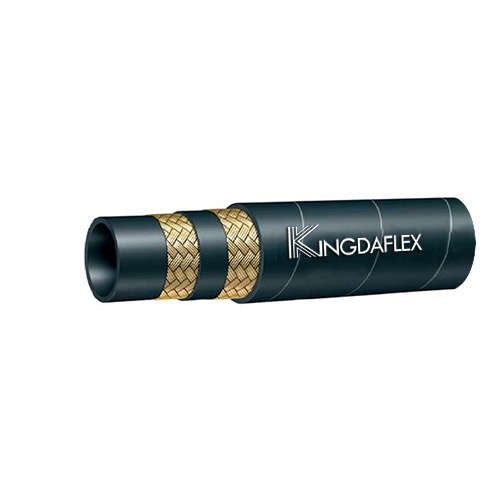 SAE 100R2AT / DIN EN853 2SN
SAE 100R2AT / DIN EN853 2SN -
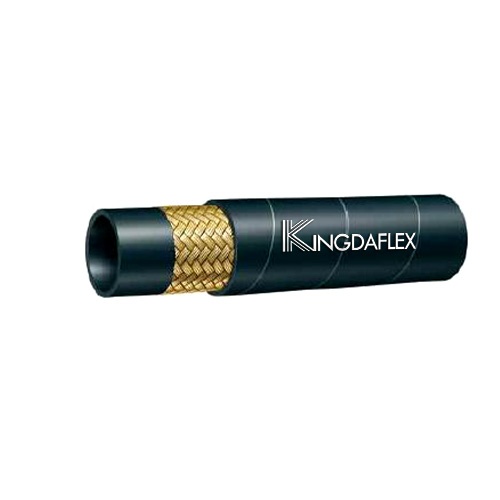 SAE 100R1AT/ DIN EN853 1SN
SAE 100R1AT/ DIN EN853 1SN
Hydraulic hoses are essential, flexible conduits designed to transmit high-pressure hydraulic fluid in various machinery and industrial applications.
Constructed with an inner tube for fluid compatibility, robust reinforcement layers (often braided or spiraled wire, or textile), and a durable outer cover, they are engineered to withstand extreme pressures, temperature fluctuations, and environmental stresses. These hoses play a critical role in transferring power from pumps to actuators like hydraulic cylinders and motors, enabling the precise and powerful movements required in heavy equipment, manufacturing, and countless other fluid power systems.
What are Pressure Washer Hoses
Pressure washer hoses are specialized hoses designed to connect a pressure washer machine to a spray gun, safely carrying water at very high pressures for cleaning applications.
They are built to withstand significantly higher pressures than a standard garden hose, often ranging from 1,500 PSI for residential units up to 6,000 PSI or more for commercial and industrial models. Their construction typically includes an inner tube made of synthetic rubber or PVC, reinforced with braided layers of textile or steel wire, and an abrasion-resistant outer cover to endure the rigors of frequent use and harsh outdoor environments.
Hydraulic Hose vs Pressure Washer Hose
While both hydraulic and pressure washer hoses are designed to handle pressurized fluids, they are engineered for vastly different applications. Understanding their fundamental distinctions is crucial for safety and optimal performance.
Construction and Reinforcement
Hydraulic hoses are built to withstand immense internal pressures, often incorporating multiple layers of spiraled or braided high-tensile steel wire reinforcement. This robust construction allows them to handle continuous, high-dynamic pressures and surges found in heavy machinery, where fluid power is essential for movement.
Pressure washer hoses, conversely, typically use braided textile or single-braid steel wire reinforcement. While strong enough for the high static water pressure of cleaning tasks, their design is not intended for the constant, pulsating, and often higher internal pressures or dynamic stresses of hydraulic systems.
Fluid Type and Temperature
Hydraulic hoses are designed to convey various hydraulic fluids, including petroleum-based oils, synthetic fluids, and water-glycol solutions, often at elevated temperatures. Their inner tubes and covers are formulated for chemical compatibility and thermal stability, preventing degradation from the specific fluid properties.
Pressure washer hoses are exclusively designed for water, which is a non-lubricating fluid. They are also exposed to different temperature ranges, usually handling cold or hot water up to a certain limit for cleaning. Their materials are not typically resistant to the chemical composition or higher operating temperatures of hydraulic oils.
Operating Pressure Range
Hydraulic hoses operate across a vast spectrum of pressures, from low-pressure return lines to extremely high-pressure main lines in heavy equipment, potentially exceeding 6,000 PSI (400 bar) or even much higher for specific applications. They are built for sustained high-pressure environments.
Pressure washer hoses, while handling “high pressure” for cleaning, typically range from 1,500 PSI to 4,000 PSI, with some specialized industrial hoses reaching up to 6,000 PSI. This pressure is for pushing water, not for the power transmission found in hydraulic systems.
Flexibility and Bend Radius
Hydraulic hoses, especially those with multiple wire plies, can be relatively stiff and have specific minimum bend radii to prevent kinking or fatigue. Their design prioritizes strength and pressure retention over extreme flexibility.
Pressure washer hoses often need to be more flexible to maneuver around objects and across various surfaces during cleaning tasks. While they have a minimum bend radius, it’s generally designed for more frequent coiling and uncoiling than a hydraulic hose.
End Fittings and Connections
Hydraulic hoses utilize specific, robust fittings (e.g., JIC, ORFS, NPT, Code 61/62 Flange) that are precision-machined for leak-proof, high-pressure seals, often requiring specialized crimping or swaging. These fittings are crucial for preventing fluid loss and maintaining system integrity.
Pressure washer hoses typically use standard quick-connect fittings or threaded connections (like M22 or 3/8″ QC) designed for water flow. While secure for their intended use, these fittings are generally not rated for the extreme pressures or dynamic loading of hydraulic applications and would fail if misused.
Here is a table showing you the differences between hydraulic hoses and pressure washer hoses
| Aspect | Hydraulic Hose | Pressure Washer Hose |
| Primary Fluid | Hydraulic oils (petroleum, synthetic, water-glycol) | Water (cold to hot) |
| Typical Pressure Range | 500 PSI to 10,000+ PSI (35 to 700+ bar) | 1,500 PSI to 6,000 PSI (100 to 400 bar) |
| Reinforcement Material | Multi-braid/spiral high-tensile steel wire, sometimes textile | Braided textile, single-braid steel wire |
| Primary Application | Power transmission in heavy machinery, industrial equipment | High-pressure cleaning and washing |
| End Fitting Types | JIC, ORFS, NPT, BSP, SAE Flange, Metric (precision, high-pressure, often crimped) | M22, 3/8″ Quick Connect, BSP (designed for water, often screw-on) |
| Flexibility (General) | Relatively stiffer; designed for high-pressure integrity, specific bend radius | More flexible; designed for maneuverability in cleaning |
| Temperature Compatibility | Broad range, often higher for hydraulic oils | Specific range for water, generally lower than hydraulic oils |
How to Choose Hydraulic Hoses and Pressure Washer Hoses?
Choosing the correct hydraulic or pressure washer hose is paramount for both safety and optimal performance, and relies heavily on understanding the specific demands of your application. The key is to match the hose’s capabilities to the system’s requirements, preventing premature failure, costly downtime, and potential hazards.
Here’s how to choose:
For Hydraulic Hoses (Think STAMPED):
- Size: Internal Diameter (ID) for flow, Outside Diameter (OD) for routing, and Length.
- Temperature: Both fluid temperature and ambient temperature.
- Application: Constant flexing, static, specific machinery type.
- Media: Chemical compatibility with the hydraulic fluid being conveyed.
- Pressure: Maximum working pressure and surge pressures.
- Ends: Correct fitting types and thread configurations for secure connections.
- Delivery: Required flow volume and velocity, and supplier availability/certifications.
For Pressure Washer Hoses:
- PSI Rating: Must match or exceed your pressure washer’s maximum output pressure.
- Hose Material: PVC (light, affordable), Rubber (flexible, durable, heavier), or Polyurethane (flexible, durable, non-marking).
- Length: Consider the reach needed for your cleaning tasks (longer hoses can slightly reduce pressure).
- Diameter: Affects water flow; 1/4″ to 3/8″ are common, with larger for industrial units.
- Connections: Ensure fittings (e.g., M22, quick-connect) are compatible with your machine and spray gun.
- Kink Resistance: Look for hoses designed to prevent kinking for consistent flow and ease of use.
Conclusion
In conclusion, distinguishing between hydraulic hoses and pressure washer hoses is not merely an academic exercise; it’s a critical safety and operational imperative. Each hose is meticulously engineered for distinct pressure thresholds, fluid types, and environmental demands. Using the correct hose ensures not only the longevity of your equipment but, more importantly, the safety of your personnel, preventing catastrophic failures and costly downtime.
Always prioritize selecting the hose that precisely matches your application’s specifications, considering factors like working pressure, temperature, fluid compatibility, and required flexibility. This meticulous approach to hose selection is the cornerstone of a reliable and safe fluid power system, ensuring that your machinery operates at peak efficiency without compromise.
For all your hydraulic hose needs, trust Kingdaflex. We offer a comprehensive range of high-quality hydraulic hoses designed to meet rigorous industry standards and diverse application requirements. Contact us today to explore our extensive product line and find the perfect hydraulic hose solution that ensures performance, durability, and safety for your operations.

